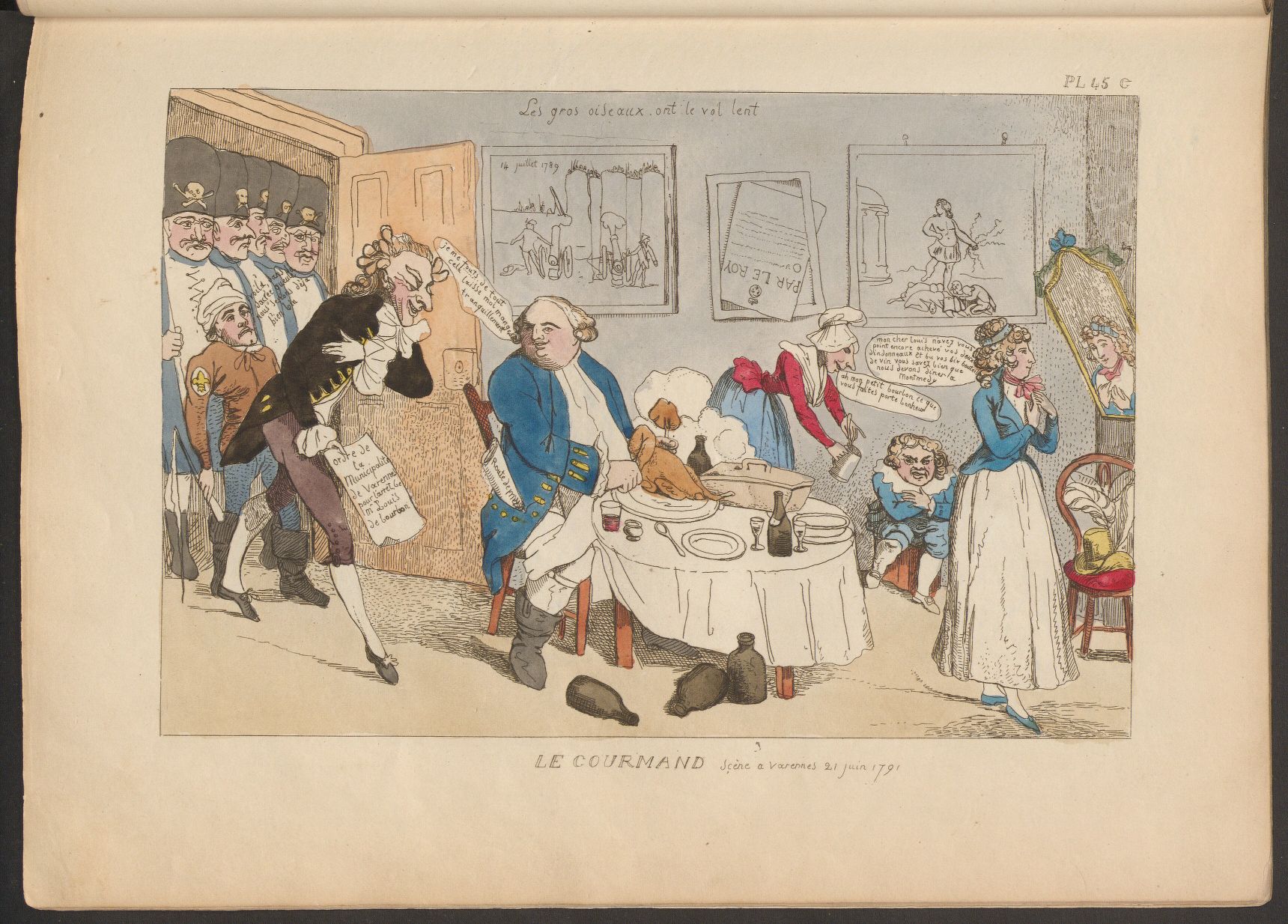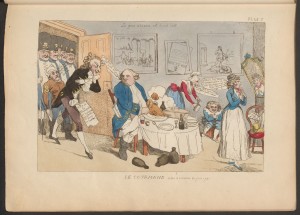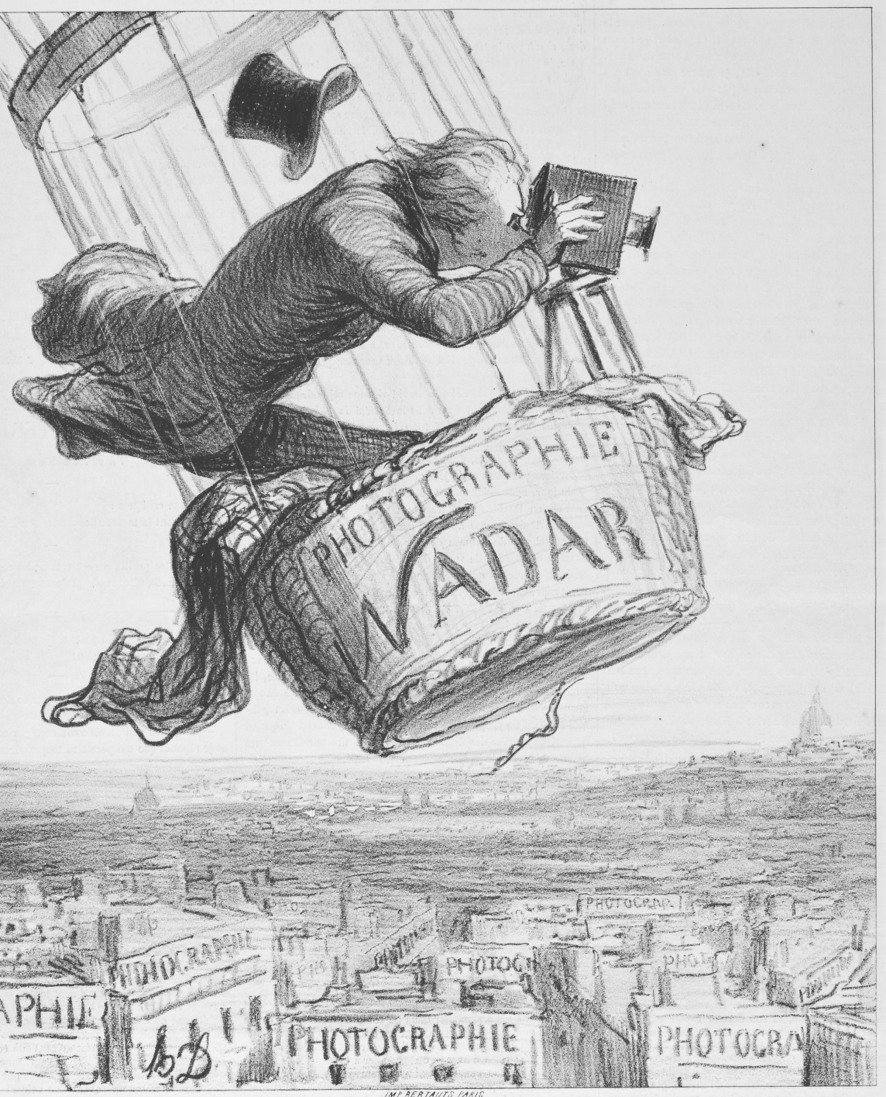Louis XVI shown as a glutton, Revolutionary era caricature
Caricature has always been a dangerous business in France: starting from the earliest days of political or religious caricature during the Age of Enlightenment, caricature artists have risked fines, imprisonment and worse–torture, beatings, assassination.
The Prince of Conde' (Louis Philippe), right, Political Badminton, both Revolutionary Era
Cuckold and Baby (the caption reads: Come Come Nurse – Good Good! what a likeness)
Nothing sacred? Perhaps. Or perhaps when nothing is beyond satire everything is equally sacred? "Equal" is the key term. A sense of humor is essential. Clearly not all peoples, nations and creeds possess the same sense of humor–or possess the capacity to develop one.
Paris was and remains the homeland of the French caricature and it was in Paris during the Revolutionary period that the caricature came into its own as a vehicle to attack the aristocracy and the church. Later, the original "terrorists" of The Terror–those masters of the mock trail and the guillotine–fell victim to caricature and beheading.

Napoleon rose through the ranks and kept his head on his shoulders, eventually becoming emperor. But he too was the target of political satire and savage caricature, and was ousted from power (the number of caricatures of him skyrocketed).

Napoleon on St Helena: I smoke while weeping over my sins
The heyday of caricature came with the end of the restored Bourbon monarchs and the death of Charles X, an aspiring theocrat: he wanted to turn the clock back to the ancien regime and reinstitute divine right monarchy. When he repealed press freedom in 1830 all hell broke loose–aided by the rebellious Romantics with a capital R rallied by Victor Hugo after the so-called Battle of Hernani.
The Battle of Hernani: It All Started at the Theater
Victor Hugo, the great theorist, preacher and practitioner of Romanticism, as seen by Daumier
Hugo leading the other great Romantics
Politics, religion, literature, art, science, medicine, fashion, family life and marriage… everything was and is fair game.
The Great Doctors (are baffled)
Fashion: Which is More Ridiculous? Right: The Absurdity of Fashion (has anything really changed?)
The Revolution of 1830 ushered in Louis Philippe, a moderate, constitutional monarch initially more tolerant than the Bourbons had been of satire and caricature. He too would wind up an autocrat bent on silencing the opposition and stifling the freedom of the press. He too was ousted by a bloody revolution, in 1848.
Louis Philippe the Citizen King (still in office when this and umpteen other caricatures were published)
Getting the boot in 1848
The reign of Louis Philippe lasted from 1830-1848, a period that saw the institutionalization of French Romanticism and an explosion in the art of caricature. No one and nothing was spared.
The paradox: when nothing is sacred, everything is sacred. No thing and no one is above criticism, scrutiny, lampooning. The Revolutionary heritage of liberty, equality and fraternity became incarnate, more than a mere slogan. The identity of the French nation today is rooted in the loam, the hard-fought battleground of personal and press freedoms and the many other modern struggles that began in the Revolutionary and Romantic ages.
Nadar: my hero, not only a photographer and balloonist but also, himself, a caricature artist (as seen here by Daumier)
Caricature, lampooning, criticizing and tweaking the collective nose at political or religious correctness: these are sacred rites and sacred rights to the French. No group of outsiders no matter how well armed and ruthless can stop them: the French will continue to satire, lampoon and caricature everyone and everything. Bless them! The City of Light is an antidote to the darkness of obscurantism, repression and terror.
Vive la Republique, Vive Paris, Vive la Liberte' in all its forms–political, religious, sexual, cultural, you name it (except the freedom to torture, terrorize, murder, persecute, starve and otherwise molest others).
A Passion for Paris is published by St. Martin’s Press on April 28, 2015. It’s already available for pre-order from Indiebound.org, from your favorite local indie bookstore or, if you must, from the usual on-line booksellers.
Click here for our spring, 2015 book tour schedule for A Passion for Paris: Romanticism and Romance in the City of Light




